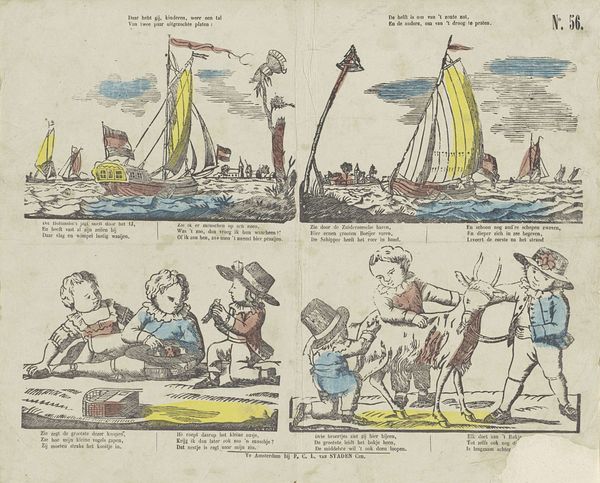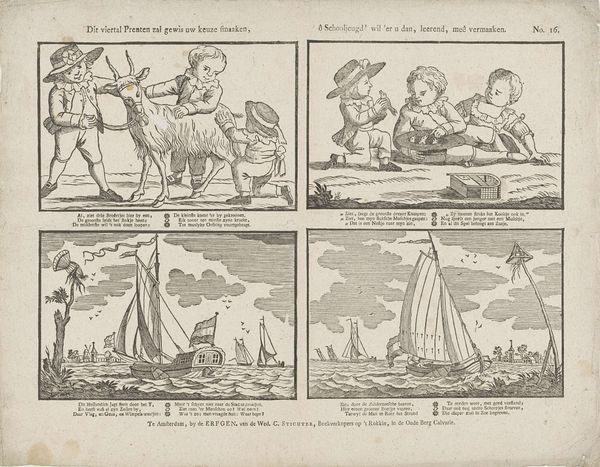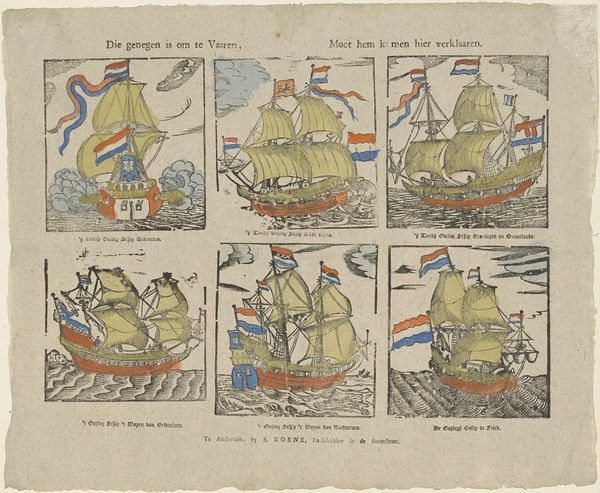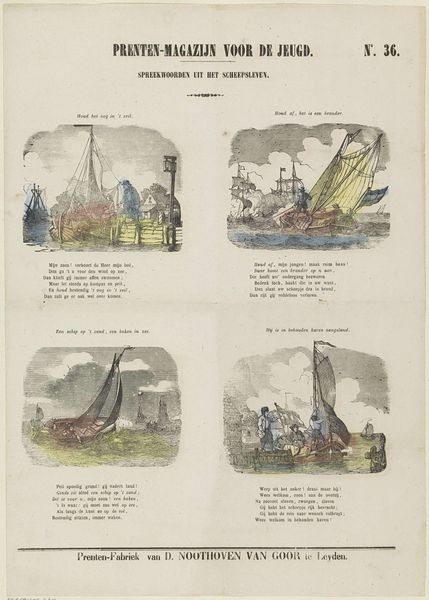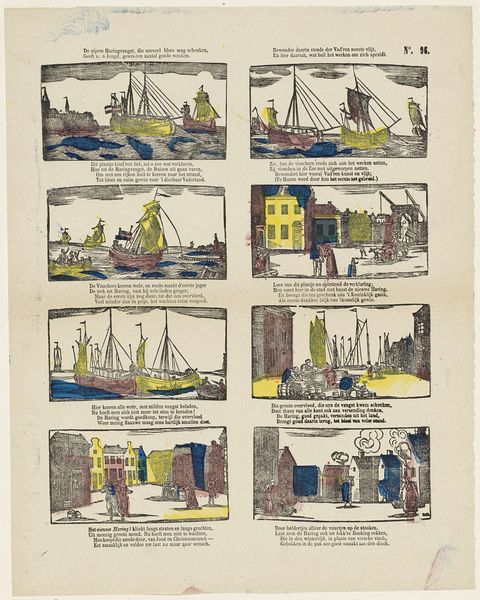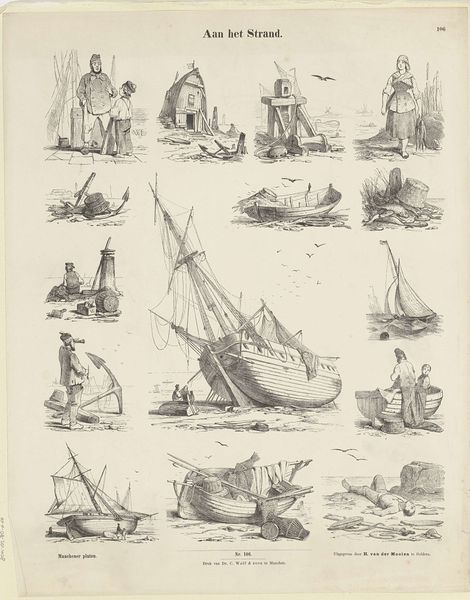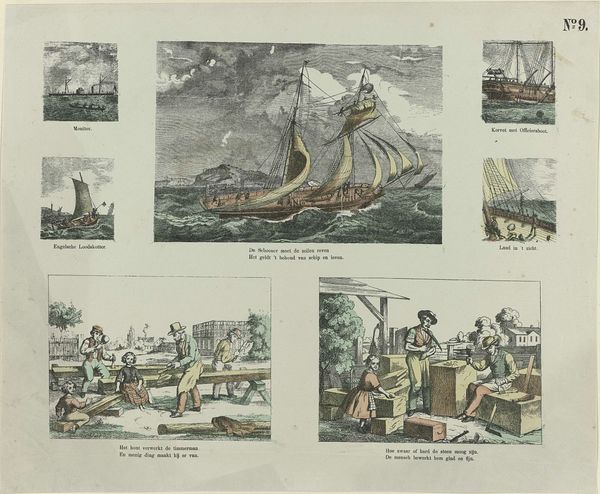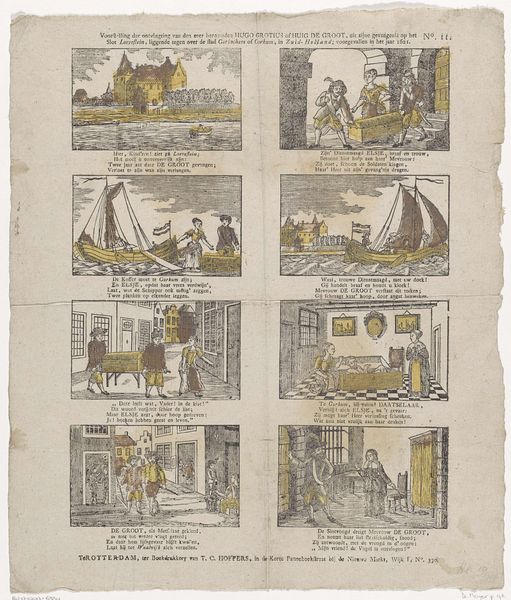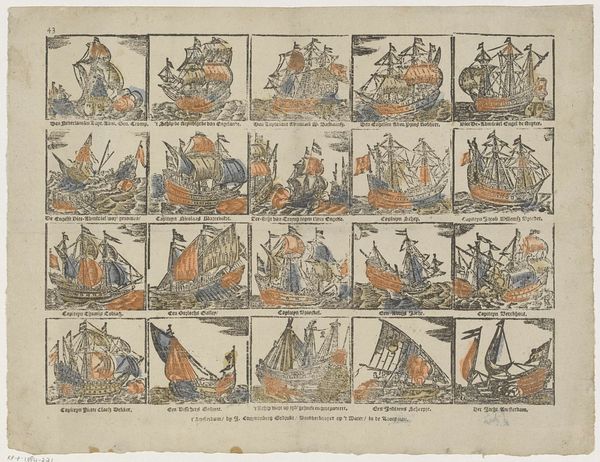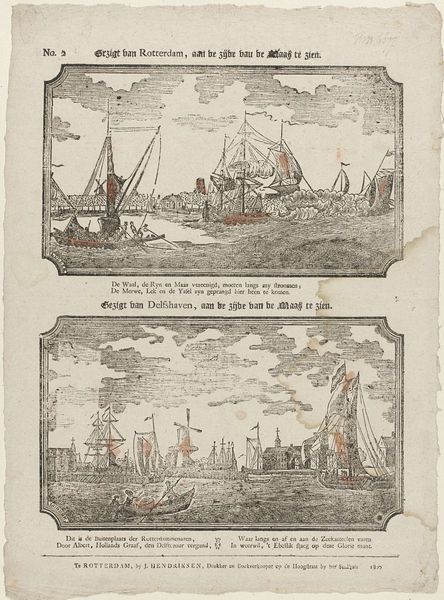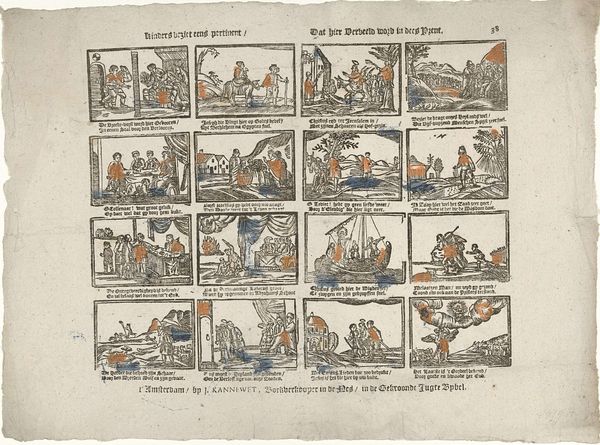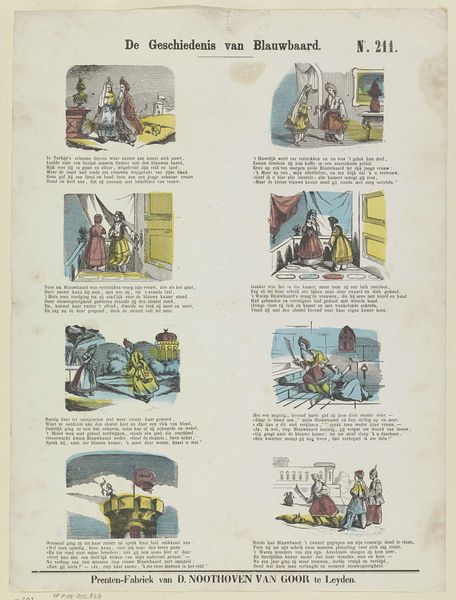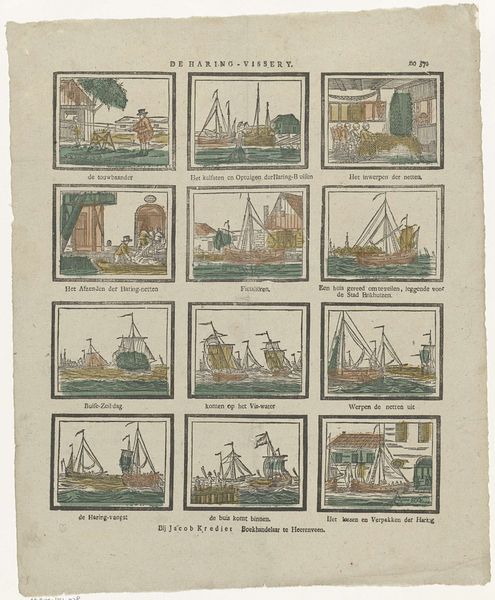
Daar hebt gij, kinderen, weer een tal / Van twee paar uitgezochte platen: / De helft is om van 'zoute nat, / En de andere, om van 't draag te praten 1827 - 1894
0:00
0:00
Dimensions: height 320 mm, width 388 mm
Copyright: Rijks Museum: Open Domain
Curator: This lithograph, created sometime between 1827 and 1894, is called "Daar hebt gij, kinderen, weer een tal / Van twee paar uitgezochte platen: / De helft is om van 'zoute nat, / En de andere, om van 't draag te praten." It's currently housed at the Rijksmuseum. Editor: My immediate response is to the interplay of graphic, almost cartoonish figuration with landscape elements, all delineated with striking lines, especially in those vibrant boat sails. There's a playful formalism at work. Curator: The piece really captures a specific cultural moment, doesn't it? Consider the title itself, which suggests these images were part of a collection intended for children. There’s a clear didactic intent interwoven with entertainment. What can we gather from these particular narratives represented in the scenes depicted? Editor: Well, strictly from a structuralist point of view, you see pairings – contrasting images of ships and children that set up binary relationships between nature/culture, activity/stillness and adulthood/childhood. These pairs allow us to delve deeper to discover intrinsic meaning. Curator: Exactly! And those children depicted, interacting with their surroundings and animals. The social dynamics, even the way they are clothed, provides valuable insights into childhood in the 19th century. Editor: Absolutely. But consider, too, how the limited palette emphasizes form through bold shapes. These compositional devices are paramount. The artist, Johannes Egbertus van Lieshout, uses simplified forms in order to focus more directly on lines and overall relationships on the picture plane. The lack of shading flattens it out, intensifying this graphic effect. Curator: And those simplified forms are key to communicating a moral lesson. It reduces ambiguity and invites accessible understanding. Think about how it functions within broader discussions of childhood, education, and social values. This lithograph embodies the complex relationship between art and society in the 19th century. Editor: I still see it as an exploration into graphic language. The artist is pushing lithography to discover its unique parameters for the rendering of the subject. The crude use of color becomes almost diagrammatic. Curator: It shows how art from any period—even something seemingly simple—is a product of its time, and loaded with social meaning. Editor: But its effectiveness comes from a sophisticated awareness of aesthetic language. I leave contemplating what it says about childhood; I walk away seeing visual ingenuity.
Comments
No comments
Be the first to comment and join the conversation on the ultimate creative platform.
